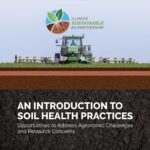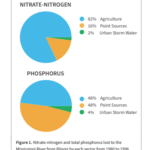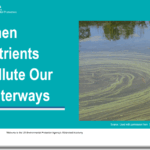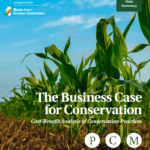Nutrient Management

Dairy Conservation Navigator
Dairy Conservation Navigator is an online platform that consolidates science-based information about dairy conservation topics and the practices and technologies that reduce a farm’s environmental footprint. Created by the U.S. Dairy Checkoff, the platform simplifies complex sustainability topics by sharing educational materials and technical insights.
View Website
ISAP’s Introduction to Soil Health Practices
The Illinois Sustainable Ag Partnership’s recent publication, “An Introduction to Soil Health Practices,” clearly communicates the role of soil health practices in addressing agronomic challenges and resource concerns. Co-author Torey Colburn, Conservation Agronomist with American Farmland Trust, and Helen VanBeck, Program Manager with American Farmland Trust provide an overview of the practical agronomic information included in the guidebook, including how practices like cover crops and no-till, when managed correctly, can build soil health in the field, suppress weed pressure, and limit nutrient loss. Torey and Helen are also joined by two farmers whose stories are shared in the guidebook as real-world examples of how farmers are finding success with these practices.
Watch Video
Illinois Nutrient Loss Reduction Strategy & Agricultural Conservation Practices
This 1-pager created by Illinois Extension, gives a brief overview of the Illinois Nutrient Loss Reduction Strategy (INLRS), highlights nutrient loss in Illinois, impacts of nutrient loss, and conservation practices that can address in-field and edge of field nutrient loss.
Download Documents
The Financial Implications of Conservation Agriculture Booklet
This booklet aims to inform farmers’ key partners—in particular, farm business management educators, agricultural lenders, and conservation educators and professionals—about the financial costs and benefits of conservation agriculture practices to assist their work with farmers.
View Website
Nutrient Pollution Module by Watershed Academy
This module is intended to provide an overview of nutrient pollution and the associated water quality and human health impacts. This module covers the science behind the nutrients nitrogen and phosphorus, the impacts of nutrient pollution on human health and the environment, the sources of nutrient pollution, and federal, state, tribal, and territory actions underway to mitigate nutrient pollution impacts. It also includes the current science on how climate change may impact nutrient pollution. Finally, the module covers the tools, opportunities, and activities available for the public to get involved in these issues.
View Website
Precision Conservation Management: The Business Case for Conservation
Precision Conservation Management (PCM), is a program of IL Corn and Illinois Soybean Association. PCM released their annual “Business Case for Conservation” that offers data highlights gleaned from farmers in Illinois. The results are useful for farmers across much of the Midwest in regard to nitrogen application, cover crops, and tillage management.
View Website